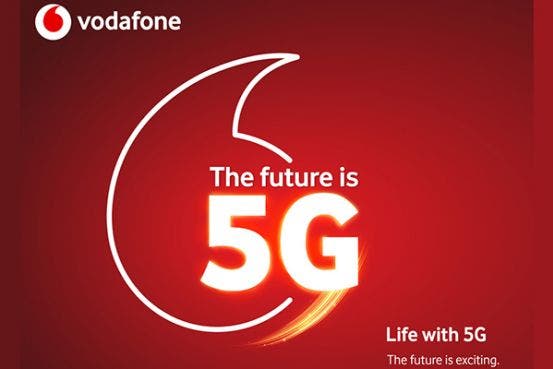Vodafone 5G network has been on existence for over a year plus now. Vodafone’s 5G network is currently available in 109 locations across the UK and the European Union.
This new generation of mobile network is also the fastest just yet. 5G on the Vodafone network promises faster download speed on your devices, more reliable and powerful network capacity, and more stable connection.
This improved network experience will help us play online games on the go and live better lives in 5G-powered smart buildings in 5G-powered smart cities with smart healthcare system also powered by the 5G network.

Cities that already have Vodafone 5G coverage include London, Edinburgh, Birmingham, Liverpool, Glasgow, and Manchester.
Away from the too much hype about Vodafone 5G, let’s take a more in-depth look at how this new generation of mobile network is transforming lives and cities and how it is not. How it offers the best mobile network experience than every other thing we have ever seen, and how it is not.
The Pros and Cons of Vodafone 5G
Pros
More powerful network capacity
Vodafone 5G network offers a greater network capacity than previous 3G and 4G LTE networks. This means reliable data connection even in crowded areas like malls or stadia. You will still be able to connect your device seamlessly without feeling like you are jostling for network with every other person around.
The high capacity Vodafone 5G network means you can also make seamless voice calls when you are in busy locations and enjoy the same distortion-free experience like when you are in a deserted location.
Faster download speed
If there is anything that the 5G network has come to be popularly associated with, it is fast download speed, and this is actually very true. Vodafone 5G network means you can download your favorite HD movie in a matter of seconds, not minutes. Vodafone 5G offers the fastest and very seamless mobile speed than we are used to.
To better understand the differences between downloading over a 4G network and downloading over a 5G network, you need to know how fast these two networks are compared to each other.
The 5G network is around ten times faster than the 4G network. The 5G network works at average speeds of 150-200Mbps, with peak speeds reaching well above 1Gbps. The 4G network on the other hand works at average speeds of 23-35Mbps.This means you’ll be able to download a full HD movie in around three minutes compared to over fiften minutes on a 4G network.
Vodafone 5G also supports faster upload speed than 4G, but the gap is not as wide as that between downloads on the two networks.
Cons
Health risk
Debate over potential health risks posed by the 5G technology is a controversial one. The new generation of mobile network offers better connectivity, more seamless streaming, and faster download speeds than 4G, so its adoption seems like something borne out necessity by our tech-hungry world.
To make this differentiated mobile network experience and other improvement in technology that 5G network offers possible, 5G has been designed to increase network capacity and offer a very low latency, which is the time that it takes a network device to receive and process a command.
The mainstay of 5G technology is the use of higher-frequency bandwidths, right across the radiofrequency spectrum, and this process, albeit controversially, has been said to have adverse effects on our health. Here is how.
An Electromagnetic field(EMF) is an energy field that results from electromagnetic radiation. An electromagnetic radiation, on the other hand, is the energy that forms from the flow of electricity.
Radiofrequency electromagnetic field (RF-EMF) is an electromagnetic emits from smartphones and other handheld devices. Normally, this emission is at very low, harmless level, but the arrival of the 5G network, which pushes higher frequency bandwidth through the radiofequency spectrum, changes everything.
In 2011, long before 5G went on trial, a 30-person group of international scientists classified the RadioFrequency Electomagnetic Field as “possibly carcinogenic”.
Limited coverage and penetration
5G network’s high frequency waves don’t travel a long distance, and only travel at a straight line. This means that away from the tower, coverage can be a problem, so mobile network providers need more investment in towers to deliver 5G than they did for 4G.
This explains why the 5G network is available to just a few number of cities and large population centers where investment in new towers already makes a commercial sense.
5G frequency waves best travel in line in sight. What this means is that buildings and trees could form barriers that could cause network distortion. This is the case for Vodafone 5G, as it is for EE, Three, and O2.
RECOMMENDED:






